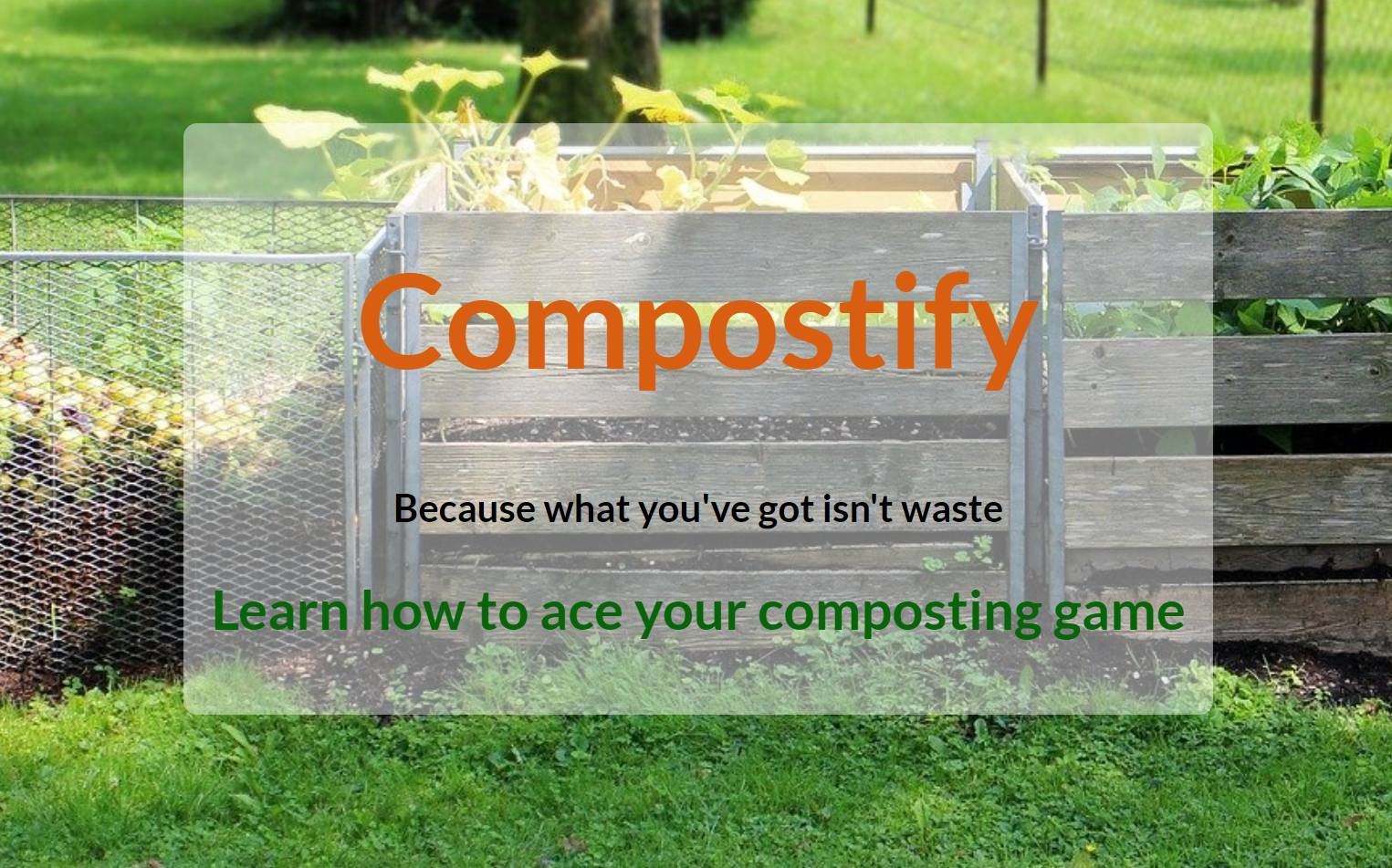Compostify - Because What You Have Isn't Waste

A third of the world's food supply ends up being wasted - and 30% to 50% of this waste comes from our own kitchens. Landfills teeming with abandoned fruit, grass clippings, and vegetables are a common sight in today’s world.
A solution? Composting. It’s the process of using decomposing food or yard waste to create fertile, rich soil. It’s also a viable way to prevent household food scraps and yard waste from heading to landfills, where they often contribute to rising global temperatures.
The problem is that many people don't know how to compost or don't know what food/yard waste items can be composted, leading to increased waste that could easily be repurposed.
Compostify, a web app I created using Qoom, aims to address this issue by simplifying the process of composting at home.
Compostability Estimate Tool
One of the main features of Compostify is its Compostability Estimate Tool. The tool helps clarify which items can be composted and which can’t be. It can be handy for figuring out what food items can and can’t be composted, especially since many people don’t know that foods like meat, dairy, and garlic are not recommended for compost.
To use the Estimation Tool, the user simply needs to activate it through the website and turn on their webcam.
The user would hold up an item (like a sticky note or banana peel) directly in front of their webcam. The tool would then provide an estimate of how compostable and how non-compostable that item is, on a scale of 0.0-1.0. These estimates could help the user make informed decisions about which items they want to put in their compost, versus which items they should put in the trash.
To create the Estimation tool, I trained an image model using Google's Teachable Machine (GTM). I used the GTM to assign various images of food and household items to two categories - “Compostable” and “Non-compostable”. This included images of compostable items like an apple core, a leftover red pepper piece, garden weeds, an unused kitchen paper towel; and images of non-compostable items like meat, a piece of cheese, a garlic bulb, and a piece of plastic wrap.
The GTM then generated JavaScript and JSON files containing the image model data, which I transferred over to my Qoom project.
In the future, I hope to make my GTM image model more accurate by training it with more varied images of compostable and non-compostable items. Including images with different backgrounds (i.e. some with neutral black/white backgrounds, others with natural backgrounds) & allowing the user to upload images to the tool are also changes I hope to work on.
Progress Tracker
Another Compostify feature is the Progress Tracker, which serves as a simple diary for users to keep track of their composting progress. It provides input fields and corresponding prompts such as “what food waste have you collected so far” and “how much of your compost has decomposed so far”. Users can submit entries to the Tracker, which will then show up on the page. They can also easily delete any of the entries they’ve submitted.
Through the process of creating this feature, I expand on my knowledge of JavaScript basics such as the async/await function pattern, arrays, and for-each loops. I also learned about Mustache Templating for the first time and how it is used to dynamically generate information onto a website page.
To improve the Progress Tracker feature, I plan to add a functionality that allows users to edit entries they’ve already submitted. Additionally, I hope to add timestamps to the page that inform the user of when they last added an entry to the Progress Tracker.
Resources Page
The last core feature of Compostify is its Resource Page, which includes links to informative videos, articles, infographics, and a Garden Hotline number. Collectively, these resources explain various aspects of the composting process, such as how to set up composting systems or bins and how to use compost to enrich garden soil.
Although my Resource Page is static at the moment, I aim to make it more dynamic by allowing the user to filter out what resources they’re looking for, through a CTRL-F-like search functionality.
I hope this article inspired you to check out Compostify and start improving your composting game at home. Remember: it’s never too late to start composting your food and yard waste and creating a little bit of impact each day. The planet will thank you for your efforts!